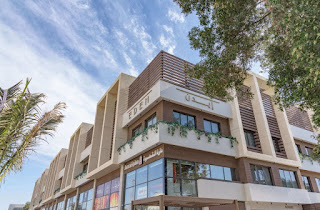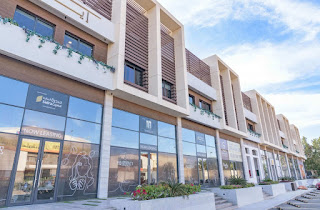Hospitality Industry in Saudi Arabia: Growth, Trends, and Forecast
The hospitality industry in the Kingdom of Saudi Arabia has been dynamic in the past few years. The kingdom is looking to increasing investment opportunities through several projects such as Qiddiya, The Red Sea Development, Amaala, NEOM, Al Ula, and Wadi Al Disah Development.
The boom in religious and leisure travel to Saudi Arabia has exposed new investment possibilities in the hospitality industry and led to an increasing number of new hotels in eminent cities. In fact, top international chains have established over 20 new hotels under their flagship or through a strategic partnership with domestic hospitality groups.
Jeddah gained the highest average daily revenue value among the top competitive hospitality markets with USD 284. Riyadh, Makkah, and Damman/Al Khobar have also been included among the top 10 areas that witness the highest average daily revenue across the world with USD 176, USD 170, and USD 132 respectively during 2018. Therefore, these areas are attractive markets for investors.
Visa Relaxation to Attract More Visitors:
In September 2019, Saudi Arabia released its new visa regime in which it confirmed the availability of e-visas and visas on arrival to a visitor from over 40 nations. Till then, the travel to Saudi Arabia was only available to expatriate workers and people with business visas, and to the religious pilgrims visiting the holy cities of Saudi Arabia—Mecca and Media. This relaxation in visa policy is expected to attract 100 million visitors by 2030.
Competitive Landscape:
The hospitality industry in Saudi Arabia is composed of several national and international brands. Many leading international brands have partnered with domestic or home-grown hospitality companies.
Opening of the New Hotels:
No fewer than 160 hotels with over 73,320 rooms will be opened in Saudi Arabia in the future, according to one report. This overwhelming growth aligns with the nation’s Vision 2030, which aims to boost the tourism industry so that it can contribute up to 10% of annual GDP by 2030, up from the current 3%.
Religious Travel Continues to Accelerate the Industry:
The presence of the two holiest cities to Muslims—Makka, and Madina attracts a huge number of religious tourists. Religious tourism has always been a key factor for the hospitality industry in Saudi Arabia. Millions of pilgrims travel to different holy places in a kingdom in a year. No wonder why this huge influx brings a boom into the hospitality industry.
Riyadh is On the Way to Become the Hotel City of Saudi Arabia:
Riyadh, the capital of Saudi Arabia, is the nation’s fastest-growing city in terms of new hotels, with over 40 projects and 10,600 rooms in progress, according to a 2020 report.
Travel and Tourism Industry—the Driving Factor
The hospitality industry of Saudi Arabia is largely fueled by the travel and tourism sector. If travel activities are on the rise across the kingdom, it would directly benefit the hospitality industry. Therefore, the growths of both industries are interdependent. As the tourism sector has witnessed a sharp rise lately, the sector is said to be the white oil for Saudi Arabia. According to a 2018 report by the World Travel and Tourism Council, Saudi Arabia contributed $65.2 billion (9%) to the Kingdom’s total economy. To uplift the travel industry, the government is developing several forms of entertainment and leisure activities such as tennis, car racing, expensive restaurant, and wrestling.
Upcoming Projects to Get Excited About:
While Saudi Arabia houses the development of some big projects, a few stand out due to their large investment and hype.
The largest project in the pipeline is the Abraj Kudai Towers in Makkah. This massive 9,760-room project will house 12 towers, housing hotels, a shopping mall, apartments, food courts, and restaurants. It is expected to be inaugurated in the third quarter of 2021.
The other big project is the 3,000-room Red Sea Project which is supposed to open in late 2022 and will be consisted of 14 luxury hotels spanning over five islands, plus two resorts in the nearby mountains.
Miscellaneous Factors:
The increasing budget hotels, use of technological advancement and innovation to sell products and services, improving the guest experience through personalized services, promotion of halal tourism and leisure tourism are some of the key trends influencing the KSA hospitality industry.
It also cannot be denied that the increasing income levels have enabled the residents to afford the upscale hotels. The MICE (Meetings, Incentives, Conferences, and Exhibitions) industry has skyrocketed business tourism, government spending in projects to increase leisure tourism and promote domestic tourism have also been important factors for the KSA hospitality industry. Here the role of the MICE is worth explaining. According to one report, the number of international events in the Middle East has been tripled in the past few years. The MICE industry in the region will likely be on an upswing soon, as the region continues to be a hub of popular global events.






Comments
Post a Comment